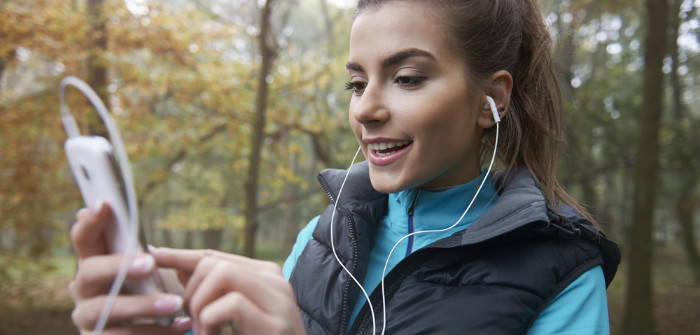Can yoga really help you get a good night’s sleep? That’s what research tells us.
Yoga may help you sleep better. A nighttime yoga practice could help us get a better night’s sleep by focusing on gentle and restorative poses. This article aims to detail a yoga routine that can help you get better sleep.
This is also something I have observed in my studio after yin classes that are calm and stress-free.
Yin Yoga is a very mild form of yoga which focuses on flexibility and releasing stiffness. Even college students have fallen asleep as soon as their heads touched the mat during savasana.
Even though it’s possible, I’ve noticed many faces that look sleepy after savasana. This is especially true after stress-free Yoga courses.
After I looked into the research on how yoga could help promote better sleep, it was no surprise to find out that analysis has definitely discovered that yoga can help promote sleep.
Let’s start by looking at some common questions people have about yoga and sleeping. Then, I will present you with a yoga routine that has been used in numerous studies to help improve sleep.
This article will cover the following: Does yoga before bedtime help sleep? Can yoga be performed at night time? What is the best time to practice yoga? Which yoga is best for sleeping? Which yoga is best for leisure? What do yoga studies say about sleep? What is the best yoga sequence to help you sleep?
What is the yoga sleep enhancement technique?
A growing number of studies have been conducted to determine how yoga can help people get a better night’s sleep. A gentle yoga follow could help us release some of the tension we may have built up all day. This helps prepare our mind and body for a good night’s sleep.
You may have experienced the calmness after savasana. No matter what time we practice yoga, afterward we will likely feel relaxed and calm.
You should, as a general rule, observe dynamic practices in the morning and calm practices at night.
If you are going to do a dynamic form of yoga at night, try to include 15 to 20 minutes of calming postures just before savasana. This will help calm your nervous system, and you’ll feel more relaxed. Then, finally, it can help you prepare for bedtime.
Doing yoga before bedtime helps you sleep?
Yoga can help calm your mind and relax the body. More and more research is proving that a light nighttime yoga practice can help people get a good night’s sleep. You’ll want to focus on calming and grounding postures, and avoid anything too dynamic.
Pigeon Pose and Baddha konasana are two examples of poses to practice before going to bed to calm your mind.
Backbends, and in most cases chest openers are poses you should avoid before going to bed. This is because they are stimulating to the nervous system, and make falling asleep that much more difficult.
Yoga at night: Can it be done?
Yoga can be done at any time! You may discover that your physique and mind are very different throughout the day. In the morning, the body is stiffer while the mind is calmer. The body is more flexible at night, but the mind could be tired or tense.
If you take a look on the calendar of the local yoga studio you will probably find that there are classes running throughout the day.
Upon opening my studio, I only offered morning and afternoon classes. Due to demand, I started a 9 pm night class and was shocked when it became my busiest!
After a long and stressful day, I found that people wanted to return to the class to relax and unwind. So I focused on a long savasana and many calming poses at the end of the class to help people relax and prepare for a good night’s sleep.
When is the best time to practice yoga?
It is best to practice yoga at a time that works for you. Ashtanga is traditionally practiced early in the morning. It’s not the same for other types of yoga, which are dependent on the individual practitioner and the local studio.
It is also a good idea to try out different types of training and then see which one works best for you.
In many 9-5 jobs people may choose to practice yoga early in the morning. For example, at 7am. You may also choose to do yoga after work or attend a class at night.
It’s your choice, so choose what suits you best.
What yoga poses are best for sleep?
According to the research I’ve read, a mild and stress-free yoga is the best for sleep. In the research I have read, either a gentle and slow Hatha class or restorative sequencing has been used. Both types can help to relax the body and mind.
It’s up to you, and what you find works best for you. Below I have a series of postures which were used in an educational research and was discovered to help with sleep. Continue reading if you’re interested.
What is the best yoga for leisure?
Yoga that helps you relax is the best for leisure. Some people want to do a dynamic type of yoga in order to release their built-up tension and energy. Some people may want a more comfortable and gentle observe. It is really a personal choice. Remember to end your meditation with savasana.
If you’re looking for a simple and stress-free Yoga observe to help you relax, you might want to try a restorative follow and finish it with a long savasana.
What is the yoga for sleep analysis?
Several studies are currently linking the benefits of yoga to better sleep. In 2013, 410 cancer patients took part in a study. The results showed that yoga is a helpful therapy to improve sleep quality and reduce sleep medication use by cancer survivors.
Another study examined the effects of yoga on insomnia in older adults. Participants in this study attended yoga classes and also practiced yoga at home. This study found that there were significant improvements in sleep quality, effectiveness, and duration.
A research was conducted to see if yoga could help older people sleep. This research was based on the fact that older people have a decreased ability to sleep, which leads to fragmented sleeping and reduced daytime alertness.
Individuals in this study practiced a sequence of exercises that was similar to the sequence above. Each yoga session was 60 minutes long and the participants were asked to practice it daily for 6 days a week, six months.
What were the results?
After six months, the Yoga group reported a significant reduction in the time it took to get to sleep and an increase in the total number of hours of sleep. They also reported a greater feeling of restfulness the next morning.
Yoga sequences that will help you sleep
All the research that has examined whether yoga could help you sleep appears to have observed an analogous sequence of yoga:
Standing and/or seated postures are considered to be a form of bodily exercise.
Savasana – the ultimate pose of relaxation
Regulated breathing – this could be either alternate nostril or counted respiration.
The philosophical aspects and/or visualization. This could include a short dialogue on the key philosophical components of yoga, or a guided mediation.
Observe that the order of these parts may vary from one observe to another, but they are all important.
The yoga sequence that I will discuss is the one that follows all of the conditions listed above, and it’s similar to the set sequence used in the third study I mentioned earlier.
Remember that individuals reported a change in their sleep patterns after six months of training at least 6 days a week.
You could experience optimistic outcomes a lot quicker. I really hope you do! If it does not work, give it some time.
- Exercises to improve respiration (5 minutes).
Take a comfortable seat. You can sit cross-legged on a cushion or on the floor. Pay attention to your breathing. Discover every inhalation and exhalation. Discover the sound, size and temperature of each breath.
We’ll then pay attention to every breath.
Find out the duration of your inhale and then your exhale. We’ll now count from 1 upwards to find out the duration of each inhale. So take a deep inhale.. 1..2…3…4…5…6… Keep in mind your quantity.
We’ll try to exhale at a similar count. If you inhaled at a count of 4, then your exhale should be the same.
Once you’re comfortable with this, we will add a pause between the same count. Let’s use the number 4 as an example:
Inhale 1…2….3….4
Pause 1…2….3….4
Exhale 1…2 ….3 ….4
- Loosening up workout routines (5 Minutes)
This is a series of exercises to get your body moving before you begin any yoga practice or exercise. These are very effective, especially if you don’t exercise much or have been seated in front of a computer all day.
You can think of solar salutations as a form of loosening postures. We encourage the large joints to perform large movements.
This YouTube video shows a loosening of workout routines.
Yoga practice must be preceded by a loosening exercise routine
- Bodily Postures (40 Minutes)
Tadasana (mountain posture)
Padahasthasana is a hand-to-foot position.
Ardhakatichakrasana (lateral arc posture)
Ardhachakrasana is also known as the half wheel pose.
Viparithakarani
Bhujangasana (cobra posture)
Shalabhasana
Mmakarasana (crocodile posture)
Vakrasana is a posture of twisting the body to one side.
Paschimothanasana is a back-stretching pose.
Prasaritta padotanasana: Lateral stretch with breath
Bharadvajasana is a seated twist.
Balasana is a pose that involves the little one’s lateral arm.
Janu sirasana
Spinal waves
Balasana is a prolonged pose for the little one.
Shashankasana (moon posture)
Vajrayana, (diamond position)
Ardha padmasana (half lotus posture)
Curls in the supine position to the ground
Jathara Parivartanasana (supine twist bilaterally)
Sethubandhasana (supine pelvic elevate)
Suptapadangusthasana is a supine leg stretch.
Add these Restorative Poses
Supta Baddhakonasana
Adhomukha Virasana
Setubandha Sarvangasana
Viparita Karan (legs up the wall, pelvis on the bolster)
- Leisure (10 minutes)
Chandra anuloma viloma (left nostril yoga respiration)
Yoga-based guided leisure
Here is an example of a guided 5 minute savasana.
Associated questions
What is sleep yoga also known as?
Yoga Nidra is the name of yoga sleep. Yoga Nidra encourages us to stay awake. Instead, we are encouraged to stay awake to experience the full relaxation this practice can offer.
It is difficult to stay awake at first! After a while, it becomes easier to hear the instructor’s voice.
You can still do Yoga Nidra if you have trouble sleeping. Do not worry and enjoy the sleep.
Here is an example of a guided Yoga Nidra:
Can I do Yoga Nidra in mattress?
Yoga Nidra is possible in bed! It may be harder to stay awake in the comfort of your own bed. If you have trouble sleeping, and you’ve discovered Yoga Nidra to help you sleep, you can do this practice in your bed. Another way to practice is on your mat following yoga.
You’ll be more relaxed and have eliminated some of the rigidity. This can even make the comfort course easier!







